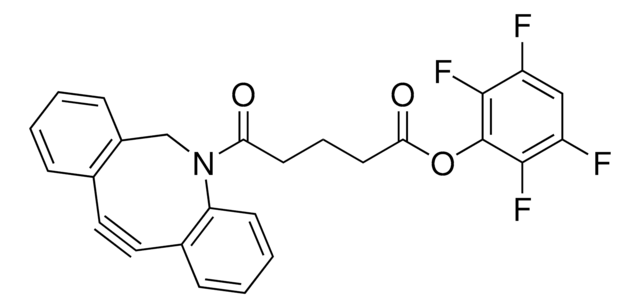777366
DBCO-Cy3
for Copper-free Click Chemistry
Synonym(e):
ADIBO-Cy3, Azadibenzocyclooctyne-Cy3, Dibenzocyclooctyne-Cy3
About This Item
Empfohlene Produkte
Qualitätsniveau
Form
solid
Eignung der Reaktion
reaction type: click chemistry
Lagertemp.
−20°C
SMILES String
CC1(C)C(/C=C/C=C2N(CCCS([O-])(=O)=O)C3=CC=C(S(=O)([O-])=O)C=C3C/2(C)C)=[N+](CCCCCC(NCCC(N4CC(C=CC=C5)=C5C#CC6=C4C=CC=C6)=O)=O)C7=C1C=C(S(=O)([O-])=O)C=C7.CC[NH+](CC)CC.CC[NH+](CC)CC
InChI
1S/C50H54N4O11S3.2C6H15N/c1-49(2)40-32-38(67(60,61)62)23-25-43(40)52(45(49)18-12-19-46-50(3,4)41-33-39(68(63,64)65)24-26-44(41)53(46)30-13-31-66(57,58)59)29-11-5-6-20-47(55)51-28-27-48(56)54-34-37-16-8-7-14-35(37)21-22-36-15-9-10-17-42(36)54;2*1-4-7(5-2)6-3/h7-10,12,14-19,23-26,32-33H,5-6,11,13,20,27-31,34H2,1-4H3,(H3-,51,55,57,58,59,60,61,62,63,64,65);2*4-6H2,1-3H3
InChIKey
HDOXKDFHZWYVPF-UHFFFAOYSA-N
Anwendung
Solubility: DMSO; DMF
Abs/Em: 553/563 nm
Extinction Coefficient:: 151,000 cm-1M-1
Signalwort
Warning
H-Sätze
Gefahreneinstufungen
Eye Irrit. 2 - Skin Irrit. 2 - STOT SE 3
Zielorgane
Respiratory system
Lagerklassenschlüssel
11 - Combustible Solids
WGK
WGK 3
Flammpunkt (°F)
Not applicable
Flammpunkt (°C)
Not applicable
Analysenzertifikate (COA)
Suchen Sie nach Analysenzertifikate (COA), indem Sie die Lot-/Chargennummer des Produkts eingeben. Lot- und Chargennummern sind auf dem Produktetikett hinter den Wörtern ‘Lot’ oder ‘Batch’ (Lot oder Charge) zu finden.
Besitzen Sie dieses Produkt bereits?
In der Dokumentenbibliothek finden Sie die Dokumentation zu den Produkten, die Sie kürzlich erworben haben.
Kunden haben sich ebenfalls angesehen
Artikel
Copper-free click chemistry is an alternative approach to click chemistry that proceeds at a lower activation barrier and is free of cytotoxic transition metal catalysts.
Unser Team von Wissenschaftlern verfügt über Erfahrung in allen Forschungsbereichen einschließlich Life Science, Materialwissenschaften, chemischer Synthese, Chromatographie, Analytik und vielen mehr..
Setzen Sie sich mit dem technischen Dienst in Verbindung.

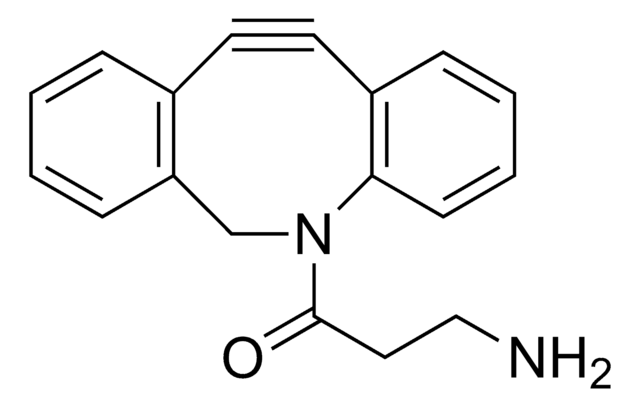
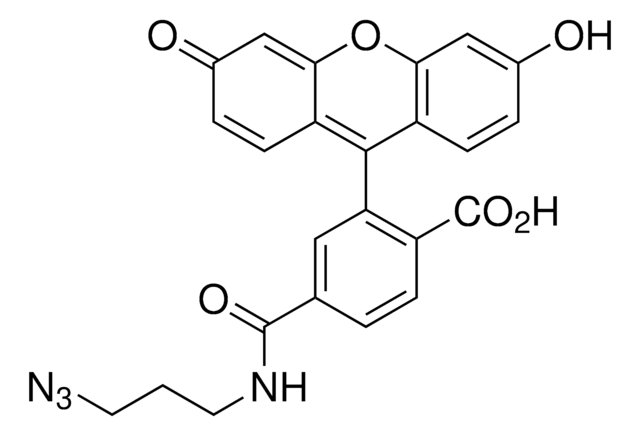


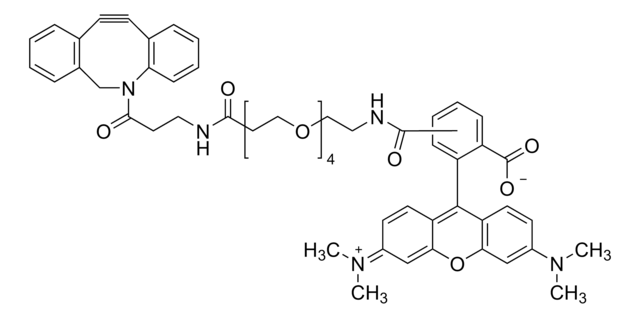
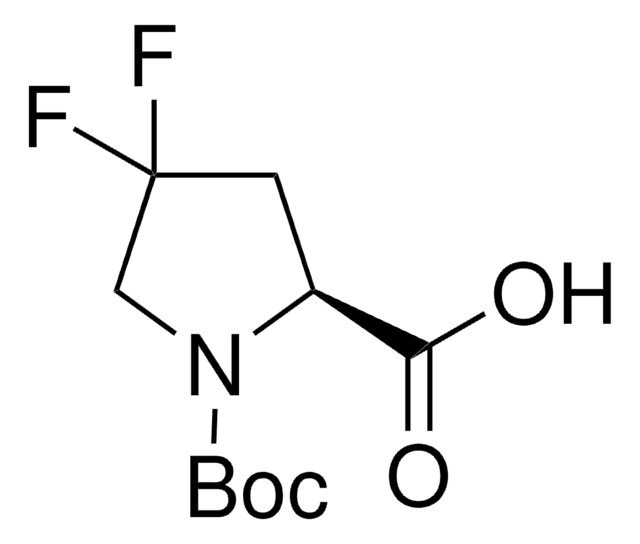
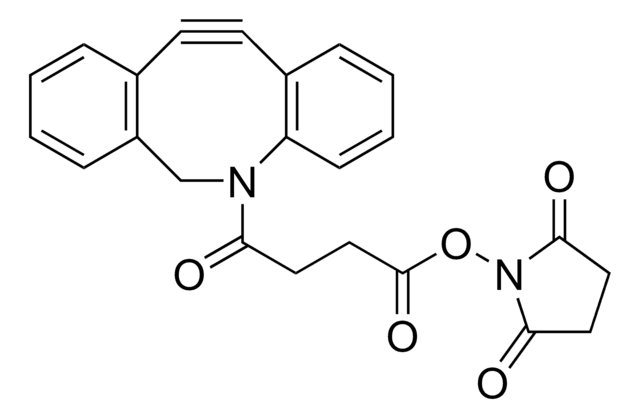
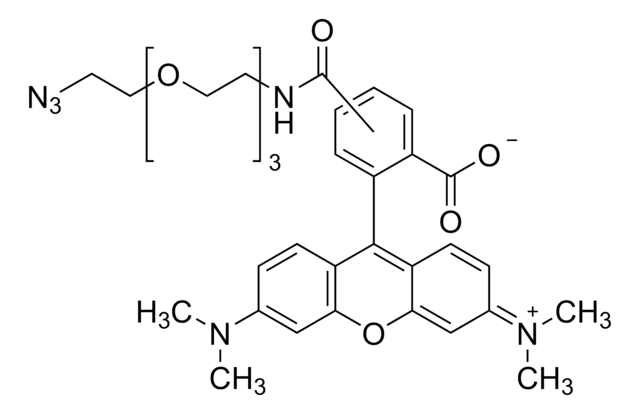


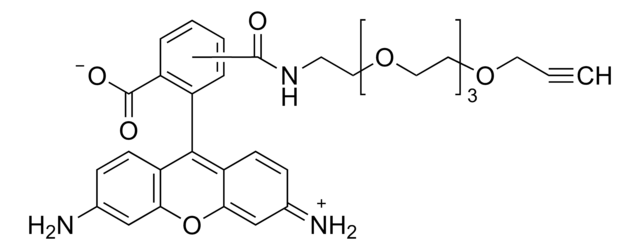
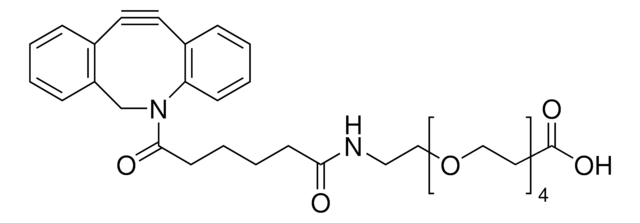
![N-[(1R,8S,9s)-Bicyclo[6.1.0]non-4-in-9-ylmethyloxycarbonyl]-1,8-diamino-3,6-dioxaoctan for Copper-free Click Chemistry](/deepweb/assets/sigmaaldrich/product/structures/294/853/c5e47d84-5aee-4797-aa24-604f291171cc/640/c5e47d84-5aee-4797-aa24-604f291171cc.png)
